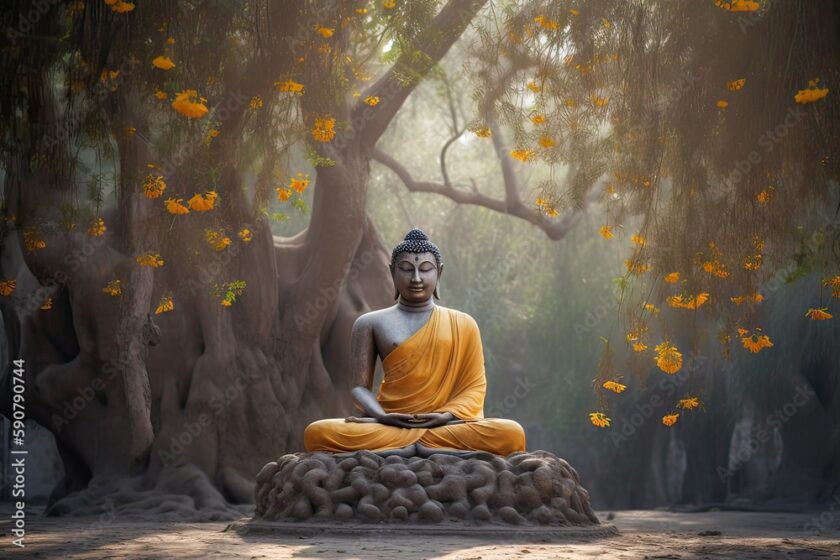Have you ever wondered about the famous legend believed to be from Nepal? This intriguing figure has captured the imagination of countless people around the world, as their mythical tale is woven into the rich fabric of Nepalese culture.
While their true identity remains a mystery, the legend’s influence is undeniable, leaving a lasting impact on both locals and foreigners alike. Join us on a captivating journey as we explore the enigmatic origins of this renowned figure and uncover the incredible legacy they have left behind.
The Famous Legend
Origin of the Legend
There is no doubt that one of the most famous legends believed to be from Nepal is that of the Buddha, Siddhartha Gautama. Born in the ancient city of Lumbini, located in present-day Nepal, Siddhartha Gautama went on to become the founder of Buddhism. The legend of his life and teachings has spread far and wide, captivating people across the globe.
Historical Significance
The legend of Siddhartha Gautama holds immense historical significance, not only for Nepal but for the entire world. His teachings, which form the core principles of Buddhism, have shaped the lives of millions of people for centuries. The legend highlights the power of inner peace, compassion, and mindfulness, creating a ripple effect of positive change and spiritual enlightenment throughout history.
Celebrations and Beliefs
In Nepal, the legend of Siddhartha Gautama is widely celebrated, especially during the festival of Buddha Purnima, also known as Vesak. This auspicious occasion marks the birth, enlightenment, and death of the Buddha. Devotees engage in various religious activities, such as visiting temples, offering prayers, and participating in processions. The legend’s teachings of non-violence, love, and wisdom resonate with the Nepalese people, leading to a deep reverence for the Buddha.
Legend’s Journey to Enlightenment
The journey of the legend of Siddhartha Gautama to enlightenment is a captivating tale of self-discovery and spiritual awakening. Born into a royal family in the fifth century BCE, Siddhartha led a sheltered life until his encounter with suffering and dissatisfaction outside the palace walls. Determined to seek the truth of existence, he renounced his luxurious lifestyle and embarked on a quest for enlightenment. Through intense meditation, self-discipline, and introspection, Siddhartha attained enlightenment, becoming the Buddha, the awakened one.

Birth and Early Life
Birthplace and Background
Siddhartha Gautama, the legendary figure, was born in Lumbini, Nepal, around 563 BCE. Lumbini, a small town in the Terai region, is today a UNESCO World Heritage Site and a significant pilgrimage destination for Buddhists worldwide. Believed to be the son of King Suddhodana and Queen Mayadevi, the prince was born into a privileged royal family, surrounded by opulence and luxury.
Childhood and Education
During his early childhood, Siddhartha led a life of comfort and indulgence within the palace walls. Shielded from the sorrows and realities of the outside world, he received a high-quality education. Siddhartha’s upbringing gave him a deep understanding of worldly affairs, arts, literature, and martial skills, laying a strong foundation for his future endeavors.
Early Achievements
As Siddhartha reached adolescence, tales about his exceptional talents began to spread throughout the kingdom. He showcased his intellectual prowess and physical prowess, impressing scholars and warriors alike. His inquisitive nature and desire for knowledge set him apart, signifying that his future would entail greatness beyond the walls of the palace.
Enlightenment and Spiritual Teachings
Path to Enlightenment
After encountering suffering on the outskirts of the palace, Siddhartha realized the fleeting nature of material possessions and embarked on a spiritual journey. Renouncing his princely life, he sought guidance from renowned spiritual teachers and practiced extreme asceticism before realizing its limitations. Finally, he discovered the Middle Way, a balance between indulgence and self-mortification, as the path to enlightenment.
Spiritual Teachings
The legend of Siddhartha Gautama encompasses profound spiritual teachings that guide individuals towards liberation from suffering. The Four Noble Truths, the foundational principles of Buddhism, outline the existence of suffering, its causes, and the path to its cessation. The Eightfold Path, consisting of right view, intention, speech, action, livelihood, effort, mindfulness, and concentration, offers a practical guide to attaining enlightenment and living a virtuous life.
Legacy and Influence
The teachings of the legend of Siddhartha Gautama have had a profound and lasting impact on the world. Buddhism, rooted in the principles taught by the Buddha, has spread across continents, influencing countless individuals in their pursuit of peace and harmony. The legend’s emphasis on compassion, mindfulness, and non-violence continues to shape moral and ethical frameworks, inspiring people to cultivate wisdom and lead meaningful lives.
Myths and Folklore
Legends and Stories
The legend of Siddhartha Gautama has given rise to numerous captivating tales and folklore, passed down through generations. These legends often portray the Buddha’s encounters with wise sages, mythical creatures, and divine beings. From his birth under a sal tree to his triumph over the demon Mara, these stories symbolize the triumph of good over evil and serve as moral lessons for believers.
Symbols and Representations
Various symbols and representations are associated with the legendary figure. The Bodhi tree, under which the Buddha attained enlightenment, is revered as a symbol of spiritual awakening. The lotus flower, with its ability to rise above muddy waters and bloom with purity, represents the journey towards enlightenment. The Dharma wheel, a prominent symbol in Buddhism, symbolizes the Buddha’s teachings and the cycle of existence.
Historical Evidence and Research
Archaeological Discoveries
Archaeological discoveries pertaining to the legend of Siddhartha Gautama have provided intriguing insights into his life and times. The excavation of the ancient city of Kapilavastu, believed to be the birthplace of the Buddha, unearthed remnants of palaces and artifacts dating back to the sixth century BCE. Moreover, the discovery of Ashoka’s pillar, inscribed with edicts relating to the Buddha’s teachings, offers concrete evidence of the legend’s historical significance.
Historical Texts
Numerous historical texts, such as the Tripitaka, offer detailed accounts of the Buddha’s life, teachings, and the early spread of Buddhism. The Jataka tales, a collection of stories related to the Buddha’s previous lives, provide moral lessons and insights into his virtues. These texts, compiled and preserved over centuries, serve as valuable sources for understanding the legend’s impact on the world.
Scholarly Studies
Scholars and researchers have dedicated extensive efforts to studying the historical context and impact of the legend of Siddhartha Gautama. Utilizing various disciplines, including archaeology, anthropology, and religious studies, these studies shed light on the social, cultural, and philosophical aspects of Buddhism. Through rigorous analysis and interpretations, scholars continue to deepen our understanding of the legend’s enduring influence.
Impact on Nepalese Culture
Religious Practices
The legend of Siddhartha Gautama is deeply intertwined with the religious practices of Nepal. Numerous Buddhist monasteries, temples, and pilgrimage sites dot the landscape, attracting devotees from around the world. The legend’s teachings form the basis of religious rites and rituals, providing spiritual solace and guidance to the Nepalese population. Buddhist festivals, such as Buddha Purnima and Lhosar, celebrate the legend’s life and teachings, fostering a sense of community and devotion.
Art and Literature
Nepalese art and literature have been greatly influenced by the legend of Siddhartha Gautama. Intricate Buddhist sculptures and paintings grace temples and monasteries, depicting scenes from the legend’s life and teachings. Literature, ranging from ancient manuscripts to contemporary writings, explores the profundity of the legend’s philosophy, inspiring numerous poets, writers, and artists to delve into themes of spirituality, compassion, and enlightenment.
Tourism
The legend’s enduring popularity has made Nepal a sought-after destination for travelers seeking spiritual enlightenment and cultural immersion. Lumbini, the birthplace of Siddhartha Gautama, attracts pilgrims from all corners of the globe, fostering intercultural exchange and dialogue. Tourists explore ancient Buddhist sites, interact with monastic communities, and engage in meditation retreats, experiencing firsthand the legacy and allure of the legend.
Controversies and Debates
Alternative Theories
Despite universal recognition of the legend’s significance, alternative theories and interpretations exist, often provoking debates and discussions. Some scholars question the historical accuracy of certain events and dates, leading to differing perspectives on the legend’s life and teachings. These diverse viewpoints enrich the understanding of the legend’s cultural and social impact, pushing the boundaries of academic exploration.
Cultural Appropriation
The global popularity of the legend of Siddhartha Gautama has resulted in instances of cultural appropriation. This phenomenon raises concerns about the commodification of Buddhist symbols and practices for commercial gain. Engaging in respectful dialogue and understanding the intricacies of a rich cultural tradition is essential to ensure that the legend’s teachings are respectfully disseminated and preserved.
International Recognition
Influence Beyond Nepal
The legend of Siddhartha Gautama has transcended geographical boundaries, captivating the hearts and minds of individuals around the world. Buddhism’s principles, inspired by the legend’s teachings, have found resonance in diverse cultures, leading to the establishment of Buddhist communities and institutions outside of Nepal. The legend’s legacy continues to inspire individuals from various backgrounds, fostering a global movement towards peace and understanding.
Honorary Titles and Awards
In recognition of the legend’s profound impact on humanity, numerous honorary titles and awards have been bestowed upon prominent Buddhist figures and advocates. The Nobel Peace Prize, awarded to His Holiness the 14th Dalai Lama, epitomizes the international recognition bestowed upon individuals who embody the teachings of the legend and work towards promoting harmony and justice.
Legacy and Inspiration
Influence on Modern Thinkers
The legend of Siddhartha Gautama has left an indelible mark on the minds of modern thinkers, scholars, and philosophers. The legend’s emphasis on mindfulness, compassion, and interconnectedness resonates with contemporary discussions on ethics, well-being, and the environment. Influential thinkers draw inspiration from the legend’s teachings, incorporating them into fields such as psychology, neuroscience, and mindfulness practices.
Social and Humanitarian Causes
The legendary figure’s teachings have inspired countless individuals to engage in social and humanitarian causes. Buddhist organizations and individuals, motivated by the legend’s compassion and dedication to alleviate suffering, work tirelessly to provide education, healthcare, and support to marginalized communities. The legend’s legacy has played a vital role in fostering social justice, equity, and the promotion of universal human values.
Conclusion
The legend of Siddhartha Gautama continues to be revered and celebrated, both within Nepal and internationally. Its profound historical significance, captivating myths, and enduring impact on culture and spirituality make it a cultural treasure cherished by millions. The legend’s teachings, emphasizing peace, wisdom, and compassion, remain as relevant today as they were centuries ago, inspiring generations to strive for enlightenment and make a positive difference in the world. Hence, the legend’s impact on Nepal and the global stage is everlasting.

